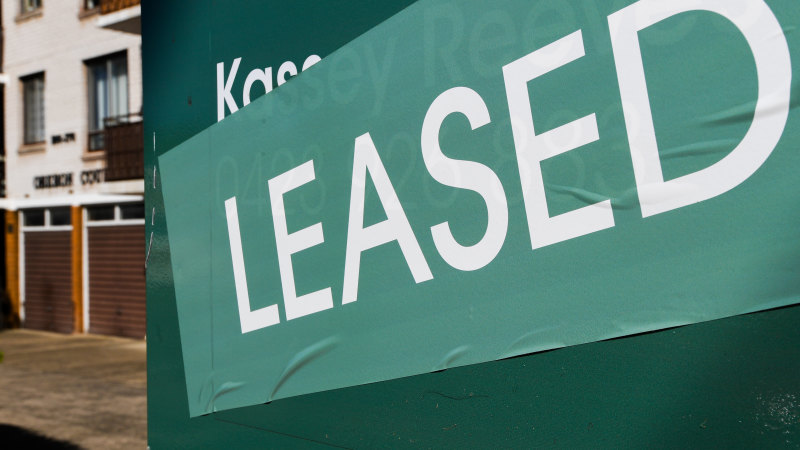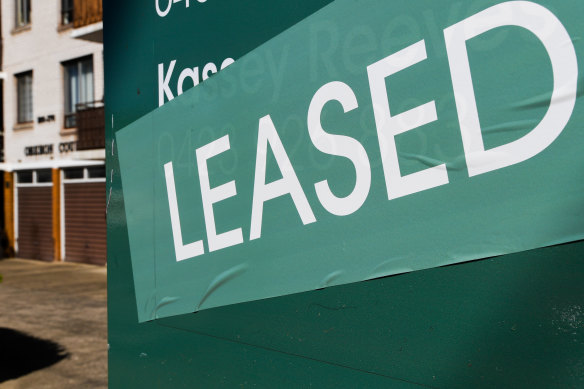Save articles for later
Add articles to your saved list and come back to them any time.
Landlords making a profit from their rentals have outnumbered negatively geared property owners for the first time since a change to capital gains tax in the late 1990s, thanks to record-low interest rates.
Data showing that more than half of the country’s landlords earned a profit in the first full financial year of the COVID-19 pandemic has emerged during a heated political and economic debate over the gains enjoyed by landlords amid soaring rents and record low vacancy rates.
More landlords earned a profit than made a loss for the first time in nearly 25 years.Credit: Peter Rae
The Australian Taxation Office data released on Thursday reveals there were a record 2.2 million landlords across the country in 2020-21 when the Reserve Bank sliced official interest rates to 0.1 per cent.
Of them, 1.2 million (or 53 per cent) either made a profit or did not lose money. Another 1 million lost money on their property – the smallest number of negatively geared landlords since 2005-06.
It’s the first time more landlords earned a profit than made a loss since the Howard government introduced a 50 per cent discount on capital gains tax for assets owned for more than 12 months.
The move was expected to fuel investment in equity markets but instead drove an influx of small-scale landlords who were prepared to make a loss on their holding in a bid to make a substantial, but lower-taxed, capital gain later.
The proportion of negatively geared landlords peaked at almost 70 per cent in 2007-08. At the time, the Reserve Bank had taken the official cash rate to 7.25 per cent, just ahead of the start of the global financial crisis.
Combined, landlords made $3.1 billion from their properties in 2020-21. The previous year, they lost $240 million while as recently as 2012-13 they lost $5.5 billion.
The turnaround was due to the fall in interest rates on mortgages over rental properties. Interest is the single largest expense claimed by landlords.
In 2020-21, landlords claimed $17.6 billion in interest costs. The previous year they claimed $21.7 billion.
During COVID-19, states introduced a variety of caps or freezes on rents. This resulted in total rental income increasing by less than 1 per cent to $47.4 billion.
But real estate agent commissions increased by 2.6 per cent to a record $3.2 billion.
Of all landlords, 1 million of them are based in NSW, where more than 60 per cent were positively geared. They made $5 billion in net rental income for the year while the remaining 40 per cent lost a combined $2.5 billion.
Separate CoreLogic data released on Thursday reveals that in more than 44 per cent of the nation’s rental markets, rents had climbed by more than 10 per cent over the past 12 years. It’s the strongest rental increase on record for the country’s capital cities.
The research, which covered 3812 markets, showed rent increases of more than 10 per cent in almost 1700 of them. Just 6.7 per cent had recorded a fall in rents.
CoreLogic economist Kaytlin Ezzy said there had been a slight slowdown in the overall pace of rents through May, but this was being driven by a drop-off in regional markets.
“Regional rental growth has slowed dramatically from a year ago while capital city rents were up 1 per cent in May,” she said.
“When you break that figure down further by property type, we can see the unit sector is under the greatest pressure, with rents increasing at a faster rate than houses due to their relative affordability.”
Cut through the noise of federal politics with news, views and expert analysis from Jacqueline Maley. Subscribers can sign up to our weekly Inside Politics newsletter here.
Most Viewed in Politics
From our partners
Source: Read Full Article


